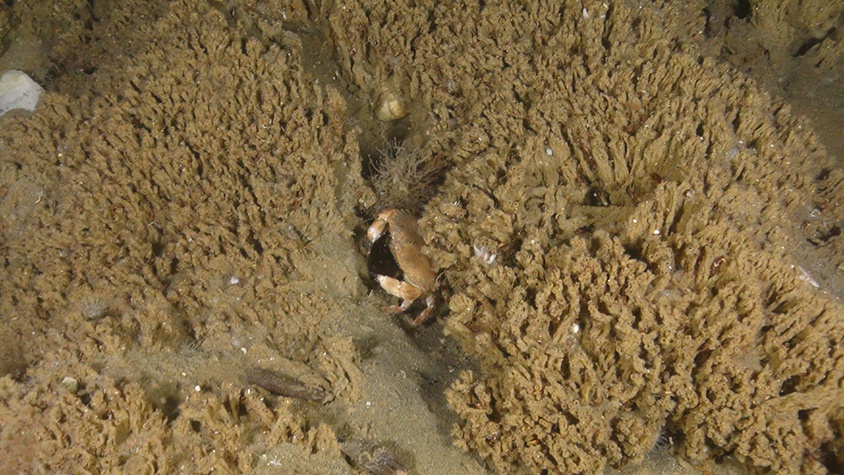Van der Reijden and her colleagues aboard an expedition ship of environmental organisation Oceana stared open-mouthed at the camera footage that came in last summer. There, on the yellow-brown bed of the North Sea, near the Brown Ridge, there was something no one could have expected: a honeycomb worm reef.
It was in an area where many fishermen use trawl nets to catch plaice and flounder. Van der Reijden contacted her professor immediately. ‘This discovery was truly bizarre’, she says.
Honeycomb worm reefs, in and of themselves, aren’t all that spectacular. The worms poke their little tentacles out of small sand tubes, to filter water in their search for food.
The tubes they use to protect themselves consist grains of sand ‘glued’ together to form pretty firm structures. ‘When a few hundred thousand get together, they can form a reef. Kind of like a coral reef.’
The Brown Ridge
These reefs are much less common than they used to be; most have been damaged or destroyed by fishermen’s trawl nets. There have never been any in the North Sea to begin with – until now. This one is unmistakable.
Van der Reijden was aboard the ship together with colleagues from the University of Delft, the research institute NIOZ, and the North Sea Foundation. The team got the opportunity to take the research vessel into the North Sea thanks to a donation by the Postcodeloterij. They asked to be pointed in the direction of some good locations: the Brown Ridge was one of them.
Van der Reijden says that the night time hinted at something spectacular down there. Her colleague at the University of Delft had made a seabed echo at night, which showed something ‘interesting’. But when they finally got a camera down there and saw the reef structures, they were baffled.
Dogfish
‘We saw small dogfish lying in the reef’, says Van der Reijden. ‘It’s also a place for anemones to grow; young fish can use it as a place to hide; and crabs make it their home. It generates all kinds of life.’
The discovery shows that there’s a lot we still don’t know about the North Sea, she says. And that there’s a lot we can still learn. A diving team with organisation ‘Duik de Noordzee Schoon’ will dive for the reef on Thursday. Van der Reijden hopes the expedition will answer the last few questions she has. ‘On camera we could only see parts of the reef. By diving down there we hope to get a better idea of what the reef looks like.’
The camera also made it seem as though the reefs were located in a hollow between sandbanks. The divers will have to confirm this.




